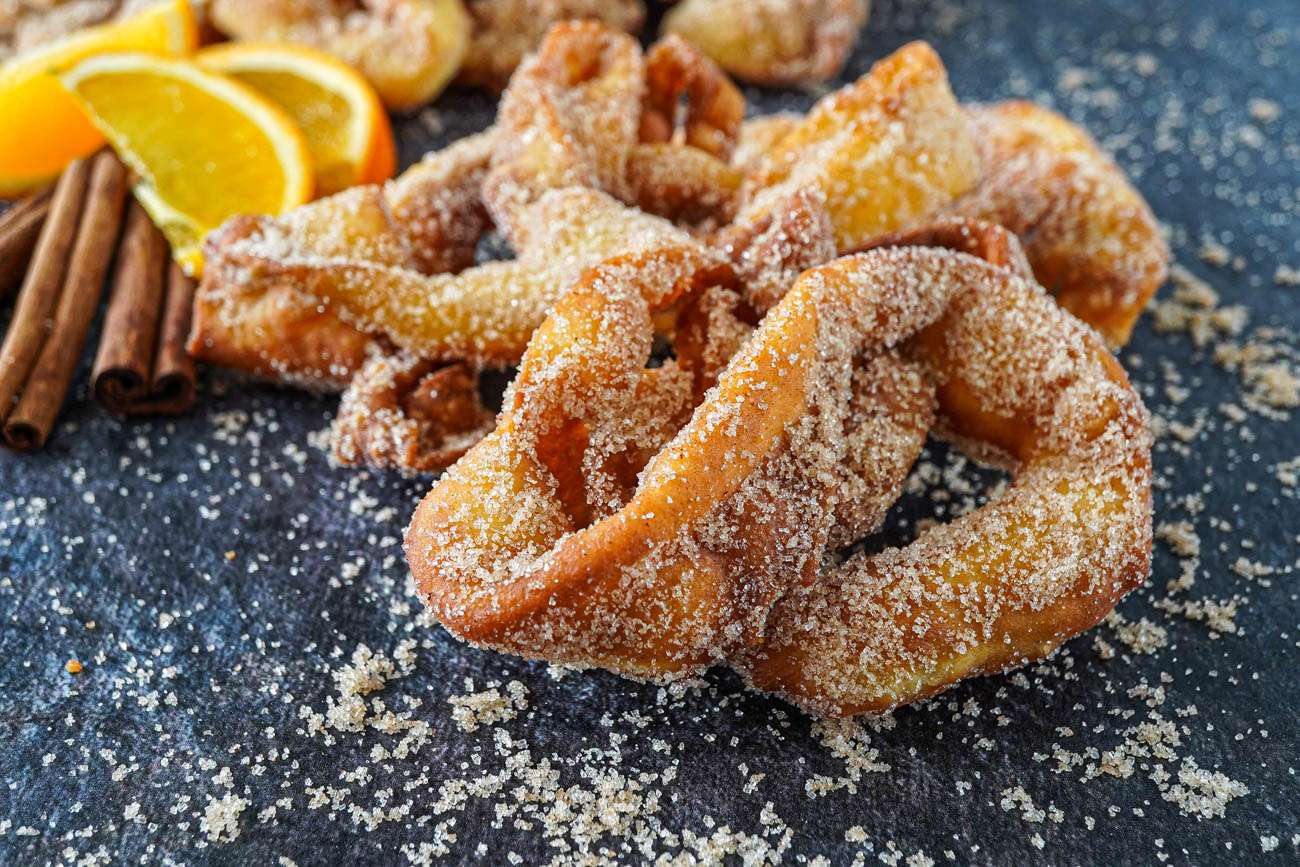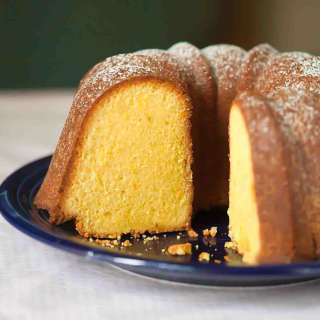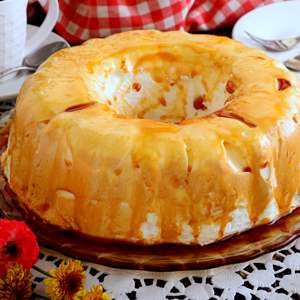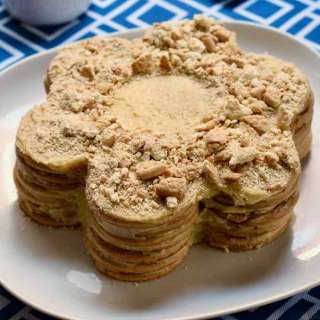
Filhós à Alentejana (Crispy Orange-Flavored Alentejo Pastries)
User Reviews
0.0
0 reviews
Unrated
-
Prep Time
30 mins
-
Cook Time
30 mins
-
Additional Time
3 hrs
-
Total Time
3 hrs 50 mins
-
Servings
30 Pastries
-
Course
Dessert
-
Cuisine
Portuguese

Filhós à Alentejana (Crispy Orange-Flavored Alentejo Pastries)
Report
A recipe for Filhós à Alentejana (Portuguese Crispy Orange-Flavored Alentejo Pastries) from the cookbook, Authentic Portuguese Cooking.
Share:
Ingredients
For the sponge:
- 1 package (1/4 ounce, 9 grams) active dry yeast
- 1/4 cup (60 milliliters) warm water 100-110˚F (37.8-43.3˚C)
- 1 tablespoon (12 grams) granulated sugar
For the dough:
- 6 cups (720 grams) all-purpose flour divided, plus extra for rolling
- 5 large eggs lightly beaten, room temperature
- 1/2 cup (120 milliliters) orange juice freshly squeezed or store-bought
- 1/3 cup (80 milliliters) olive oil warmed
- 1/4 cup (60 milliliters) aguardente (whiskey or brandy)
- 1 teaspoon (6 grams) table salt
- Vegetable, grapeseed, or corn oil for frying
- 3 cups (600 grams) sugar
- 1 tablespoon (8 grams) ground cinnamon mixed with the sugar for coating
Add to Shopping List
Instructions
For the sponge:
- In a cup or small bowl, sprinkle the yeast over the water, then sir in the sugar and cover. Let stand for 10 minutes to proof.
For the dough:
- Dump 5 cups (600 grams) of the flour into a large bowl. Make a well in the center and add the yeast sponge, eggs, orange juice, olive oil, whiskey, and salt.
- Using one hand, with fingers curled like a claw, mix all the ingredients until they come together into a dough. If necessary, add the remaining 1 cup (120 grams) flour so that the dough is not so soft that it will stretch to easily or too sticky.
- Knead for 10 to 15 minutes. It should be smooth and spring back when lightly pressed with your finger.
- Cover the bowl with plastic wrap, then cover completely with a large towel. Place the bowl in a draft-free spot and leave the dough to rise until doubled in size. It will be a slow rise and could take between 2 and 3 hours. The dough is ready when an indentation remains after you have pressed the dough again with your index finger.
- Lay out kitchen towels near your workspace and lightly dust them with flour. Use some of the remaining flour to dust your workspace and roll out walnut-size pieces of dough into 6 to 8 inch (15 to 20 centimeters) disks (trimming if necessary and about 1/16 inch (1.5 millimeters) thick.
- Better still, if you have a ravioli machine, use it. To roll the dough with a pasta dough machine, flatten a piece of the dough, lightly dust it with some flour and pass it through the cylinders four times, cranking the level thinner each time, to achieve 1/16 inch (1.5 millimeters). Give the disks a slight stretch and place on the very floured towels.
- After all the disks have been rolled, or working in batches, place the disks one at a time on a cutting board and, using a sharp knife or baker's razor, cut 4 parallel slits 1 inch (2.5 centimeters) from the edge and evenly spread about 3/4 inch (2 centimeters) apart.
- Transfer back to the towel. Repeat with the remaining dough. If you have someone helping you, he or she can roll and cut while you fry. Set up the sugar and cinnamon on a tray or large plate.
- Heat 5 to 6 inches (12.5 to 15 centimeters) of oil in a medium saucepan to 350˚F (180˚C).
- When the oil is quivering, pick up a disk with one hand. With the other hand, take every other loop and pull it away from the center. Then with the first hand, pull the remaining middle loop in the opposite direction, away from the center of the disk. Holding the loops out, horizontally in opposite directions, carefully lower the dough into the hot oil.
- Fry until golden and crisp. You might like these light golden, but there is a richer taste when the pastries are fried to a medium golden. (If they are not crisp and are very golden, the dough is too thick).
- As they become done, transfer the pastries to a plate with the cinnamon-sugar topping and gently use your fingers to coat thoroughly. The topping will not stick as well if they are too cool. The shape will look like tangled ribbons.
- These are fragile and break easily. Stored in large tins, they will keep for at least a month.
Genuine Reviews
User Reviews
Overall Rating
0.0
0 reviews
Unrated
Other Recipes















